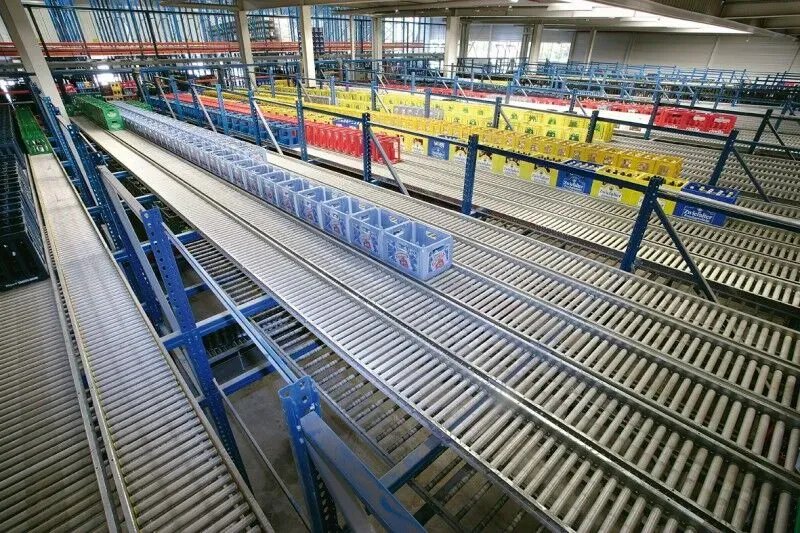The warehouse is a playground of multiple processes, with varied data, material, human capital, and information flows. Whether it is an e-commerce fulfilment centre, retail distribution centre or a post parcel sortation hub, each has its nature of operations and poses its unique challenges.
The operational dynamics across industries vary depending upon the business’s objectives, functions, industry undercurrents and consumer trends that dictate performance goals. Moreover, efficient warehouse operations are vital for maintaining a competitive advantage in today’s fast-paced and dynamic business environment.
As a result, gaining visibility and traceability into your operations is crucial to acquire superior control of operations, making them more efficient and improving performance. Warehouse managers and key decision makers need access to real-time data and insightful metrics to help them make the most optimum decision.
Thus, KPIs relevant to your operations and business are important. Warehouse Management Systems (WMS) and Warehouse Control Systems (WCS) are crucial tools and technologies that can be leveraged to provide business intelligence to make optimal decisions.

Tracking and understanding crucial KPIs helps decision-makers review processes and monitor performance trends, gauge efficiency, and identify potential areas of improvement to manage risks to drive the business forward ultimately. Various methods are available to measure warehouse performance, such as analysing financial statements, conducting performance reviews, and utilising business metrics.
However, one of the most popular approaches is establishing KPIs for warehouse management. These KPIs evaluate how effectively your processes achieve their goals and objectives, serving as a report card for your warehouse. Each warehouse KPI focuses on a specific function or operation, providing a result that indicates its performance by comparing it to previous figures and benchmarks.
Implementing a WMS software solution simplifies capturing the abundant data constantly generated in the warehouse and transforming it into valuable business information. The information can be strategically utilised to enhance business performance and increase profit margins. Over time, by measuring the appropriate metrics, your business can provide better and faster customer service, ultimately building the desired reputation.
At the same time, organisations increasingly rely on Warehouse Control Systems (WCS) to achieve optimal performance. A WCS software application manages and controls various warehouse activities, including inventory management, order fulfilment, and resource allocation.

One significant advantage of a WCS is its capability to control and orchestrate the smooth working of various warehouse infrastructures, processes, and reporting, including machinery, human capital and flow of data and material. It also helps monitor critical operational metrics, offering real-time visibility into warehouse performance.
The Warehouse Control Systems and Warehouse Management Systems are leading digital supply chain technologies to track and improve warehouse metrics to drive productivity, cost optimisation, and service excellence.
Some KPIs and Metrics for Measuring Operational Performance
Order Processing Time
This key performance indicator quantifies the duration required for a warehouse to receive, process, and fulfil an order. By monitoring order processing time, warehouse management can identify areas of inefficiency and implement strategies to enhance the speed and accuracy of order fulfilment.
Inventory Accuracy
Inventory accuracy is a critical KPI within warehouse control systems. It gauges the percentage of inventory items precisely recorded and accounted for in the WMS. Maintaining high inventory accuracy is paramount to avoid stockouts, minimise overstocking, and uphold customer satisfaction. Inventory accuracy also assesses the accuracy of product selection and retrieval accuracy from various warehouse locations. Monitoring inventory accuracy helps identify areas for improvement and enables prompt corrective action.
Throughput
Throughput measures the rate at which items traverse the warehouse. Warehouse managers can identify bottlenecks and optimise processes to enhance overall operational efficiency by monitoring throughput.
Capacity Utilisation
Capacity utilisation quantifies the effective utilisation of available space within the warehouse. By monitoring capacity utilisation, warehouse managers can optimise warehouse layout and storage systems to maximise storage capacity and improve operational efficiency.
Order Accuracy
This KPI measures the percentage of orders that are fulfilled accurately. High order accuracy is crucial for preserving customer satisfaction and minimising returns or exchanges.
Labour Productivity
Labour productivity quantifies the efficiency of warehouse workers. By tracking labour productivity, warehouse managers can identify areas of inefficiency and implement measures to enhance worker productivity and efficiency.
Downtime
Downtime measures the duration during which warehouse systems are offline or unavailable. By monitoring rest, warehouse managers can identify system issues and implement strategies to enhance system reliability and minimise disruptions.
Order Fulfilment Time
Order fulfilment time is the duration from order receipt to customer delivery. This KPI is essential as it reflects the speed at which orders are fulfilled. Higher order fulfilment times may result in prolonged customer waiting periods, potentially leading to lost sales or dissatisfied customers.
Fulfilment Efficiency
Fulfilment efficiency refers to the percentage of products shipped within the agreed-upon timeframe, typically within 24 hours of order receipt. A higher rate indicates greater efficiency in the fulfilment process, as there are fewer instances of late shipments that could negatively impact customer satisfaction.
Stockout Rate
Stockout rate indicates the frequency of insufficient inventory available for sale during peak selling periods, such as Black Friday or back-to-school shopping seasons. A higher percentage suggests more frequent stockouts, which may result in customer loss.
Inventory Turns
This KPI measures the speed at which stock is sold. It is calculated by dividing the cost of goods sold by the average list and multiplying the result by 365 days. This provides the average time for an item to move from warehouse arrival to departure. To improve this metric, focus on reducing inventory holding time and accelerating delivery and processing times.
Overall Equipment Efficiency (OEE)
OEE quantifies the overall performance of equipment in terms of availability, performance, and quality. It is a comprehensive measure considering equipment uptime, production speed, and errors. By monitoring OEE, warehouse managers can identify equipment-related inefficiencies and implement measures to enhance operational effectiveness.
Other important metrics include cycle time, pick rate, and pick efficiency. However, these metrics help uncover critical insights in respective functions and operational areas of the warehouse depending upon the industry and operational goals.
Overall, these KPIs provide business intelligence that helps make informed decisions to achieve operational excellence. By tracking these key metrics, warehouse managers can gain valuable insights into their operations and work to enhance productivity, reduce costs, and continuously improve efficiency, accuracy, and customer satisfaction.
Thank you for reading our blog. At L-A-C Logistics Automation, our WCS software covers all aspects of warehouse management and integrates seamlessly with host IT systems, offering great usability and real-time warehouse communication. Contact us for more information today!


